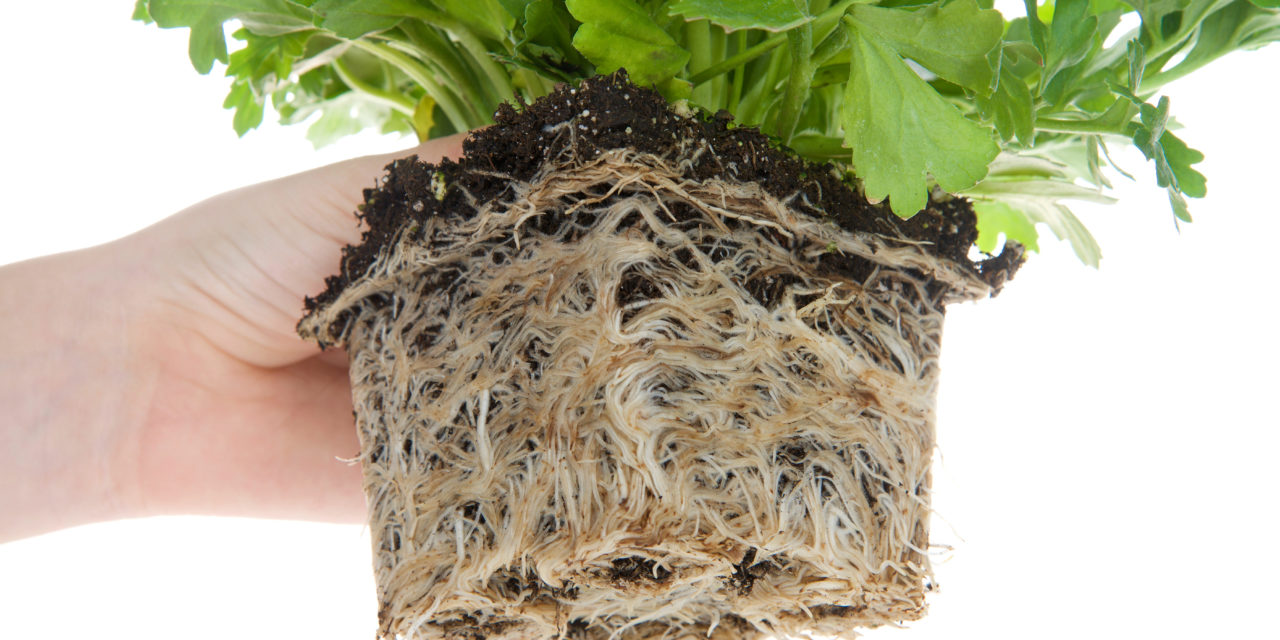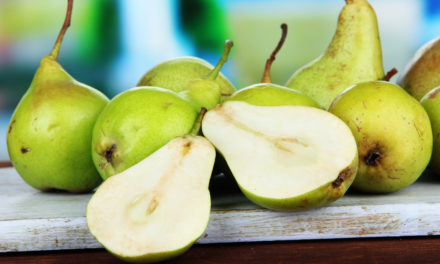

Did you ever have a houseplant or garden container of herbs that seemed stuck? A silent killer of many container gardens and house plants is the binding of the roots. Since we normally don’t see the roots, we forget that they are busy growing. I was demonstrating how to plant a container at a recent free seminar hosted at Buchheit when I knocked a plant out of this pot and started to tear into the bound up roots. This is normal behavior for me. One of the ladies stopped me and asked if that treatment would damage the plant. No, the best way to remove a plant from the nursery pot is with a sharp whack to the bottom of the pot. It reduces damage but it does look rather forceful. Many times what you will discover when you remove the plant is a bundle of white roots and a spider web of lacy roots that come off in your hand. Don’t panic.
If you don’t help a root-bound plant by spreading out the roots it will be unable to stretch out on its own. While it may not die, it will not thrive or produce much fruit. I just pulled two container blueberry plants that I thought just didn’t like the dirt, but when I pulled them up, you could still see the “square” outline of dirt and roots, just as they had been planted. I never considered the possibility that they were root bound since they were growing, just not taking off like they should have been in that container.

I like to section the root bound plant into four “cuts” of the impacted root ball. I gently slide my finger down the side of the soil and roots and spread them out.
Then and only then is the plant ready to be inserted into your garden soil or containers.

A plant that becomes root bound (where there is no more space for expansion) will stop growing. It is trapped when there is no more room for it to add roots and the roots twist and bind back up into a solid mass. If you just plant it, often it will be unable to find a way to sink the roots down into the soil and it will not thrive. It may grow but it will not be vigorous. An understanding of why it is so important to untangle the roots will help you press in and make sure the roots are available to take up the nutrients and water needed for the success of the entire plant.

I planted two marigolds into an existing flower bed. I gently pulled the snared roots on the flower on the right while I left the root ball intact to show what might happen. Both marigolds are blooming but the one on the left has leaf curl and is drooping since it has fewer roots able to bring water and food up from the soil. So rip into those root bound pots and enjoy gardening success. Relax and enjoy the day. Anne May







Great article Anne! Now I know I’m repotting my “jungle” of plants the right way and why!